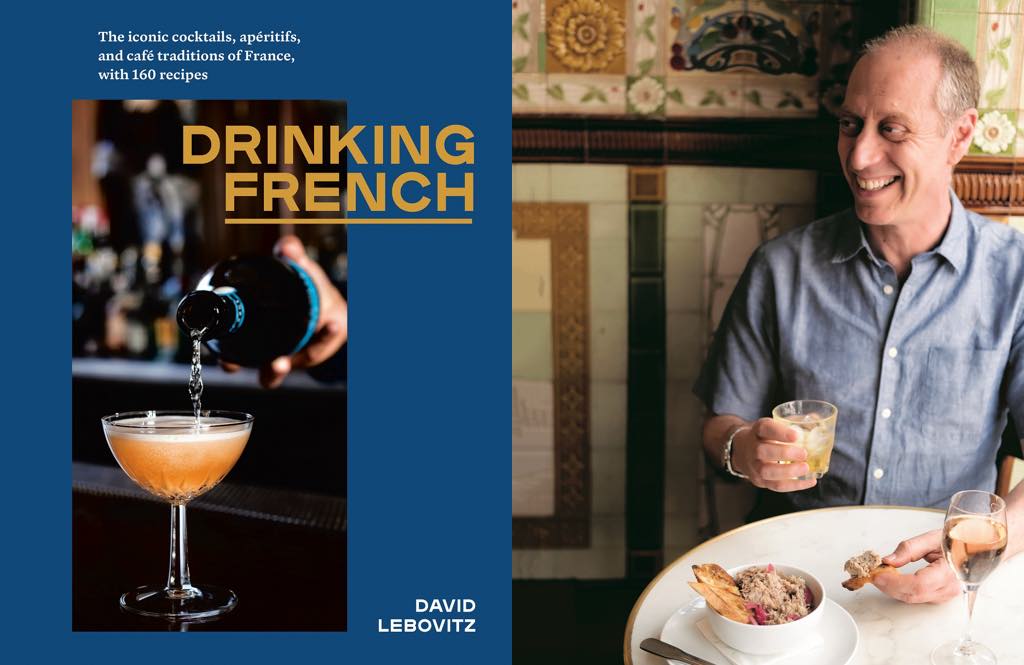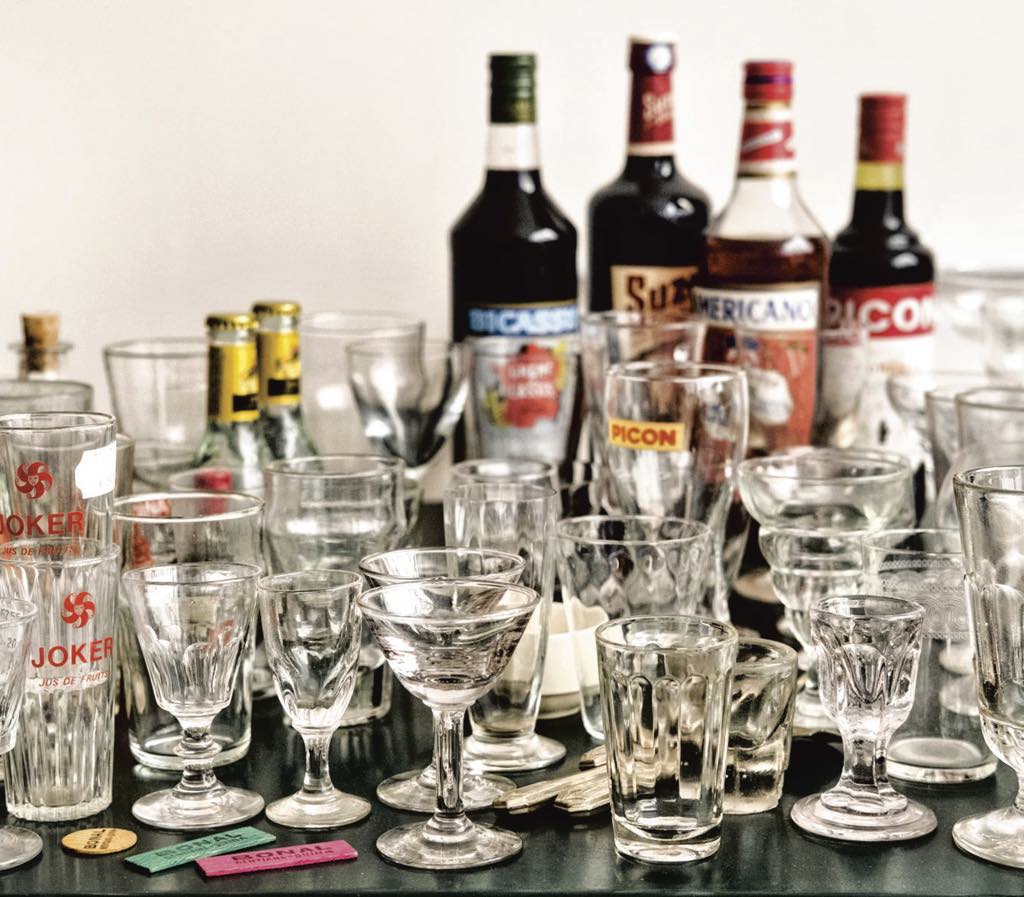One of the world’s best-loved food bloggers, Paris-based pastry chef David Lebovitz started his career at Chez Panisse, Alice Waters’ temple of fresh, local, seasonal cuisine in Berkeley, California. Since then, he has published a slew of cookbooks, including The Great Book of Chocolate, My Paris Kitchen and The Sweet Life in Paris. In the following interview, he talks about his new book, Drinking French – a wide survey of all types of French drinks, from chocolat chaud to the blanc limé and la bicyclette – and about how he is experiencing life as a shut-in in Paris during the Covid-19 crisis.
You’re a pastry chef. What inspired you to write about French drinks?
I was at a bar in Paris and was watching them mixing different drinks and flavors. They wound up with something that tasted like all of those ingredients but better – just like baking. I also realized that the drinking part of French culture hadn’t really been explored. There are so many aspects of French gastronomy that have been talked about, but they have this amazing tradition of spirits – not just what’s in the bottle, but everything surrounding it. In France, a bottle of wine is not just a bottle of wine; it represents a region, a terroir, a style of life. It’s a rich subject. But for French people, it’s not a subject, it’s just part of life.
What’s your favorite drink in the book?
The boulevardier, because it combines American rye whiskey – even though it was invented in France – with bitters. I use the wonderful Dolin red bitters from Chambéry and French sweet vermouth.
Are you consuming lots of cocktails from the book to help you survive lockdown in Paris?
For two years [while working on the book], I was drinking a lot – I don’t mean that in a bad way. When I write a baking book, I get up at 8 am and start baking, but when you write this kind of book, it’s hard to test recipes. I became very sensitive – I’d have a sip of alcohol and feel drunk, so I really had to watch it. That was challenging. After I finished the book, I kind of stopped drinking for a while. I wasn’t drinking heavily, but I was drinking frequently.
Let’s talk about how you are dealing with the lockdown. Did you stockpile anything?
When the “confinement” was announced, I thought, I work at home, I’ve got this – I’ve been in confinement for 20 years: I’m a writer. But I didn’t realize how deep it was going to go. I did stockpile a few things… What was funny was that on Instagram I did some posts about my kitchen and was showing all the flour I had, and butter and eggs and sugar. People were saying, that’s really bad, you shouldn’t hoard. I was, like, this is less than what I usually have – this is what I do for a living. So I’m set for all those things. I did buy some groceries. I got tuna, I got extra butter to put in the freezer. I went to Picard [a frozen-food chain] and got some things. The chain of distribution can be fragile in France, even in the best of times. You go to the supermarket and ask where the sugar is, and they say, we don’t have any, come back on Tuesday. So, I wanted to be prepared. But I don’t have 80 rolls of toilet paper.
What are you eating during the lockdown?
I’m actually cooking a lot. I’m really trying to eat a lot of fresh produce. I made a grapefruit risotto, and we’ve been eating a fair amount of pasta. I bought some fish at Picard – most fish is frozen anyway. For some reason, I’ve been craving frozen pizza, and I thought that that was really bad. I put a picture of it on Instagram, and people got all in my face – saying, you should make your own dough and so on. But this is the time [for comfort food]. People shouldn’t judge anybody. We have food; we’re fortunate.
Is there anything you crave that you can’t get while you’re in lockdown?
Some beach time… And I really want peanut M&Ms. The other thing I crave is baguettes. We get baguettes in France all the time, so it sounds flip when you say to Americans, I would kill for a baguette, but it’s part of our life, and I really miss being able to just go grab one. The bakeries are open, but people aren’t social-distancing, so I am trying not to go.
What else do you miss about your ordinary life in Paris?
I miss my Pilates class. I miss going to restaurants, which I didn’t think I would. In France, a restaurant is not just a restaurant. You get to know them, you have your canteen. They kind of become extensions of your life.
What do you say when people ask you for a restaurant recommendation?
I send everyone to Bouillon Pigalle. It’s good, it’s cheap, and they do a good job. No reservations. They are making French food fun again.
What French chef would you like to be in lockdown with?
I’ve been enjoying Claire Heitzler, a pastry chef [formerly of Ladurée]. She’s been doing really wonderful things on Instagram, baking in her kitchen. One of the great things about the lockdown is that a lot of chefs are doing Instagram stories, and hers look really good.
What’s the first thing you’ll do when lockdown ends and you can finally go out?
Make a restaurant reservation and go. I want some frites. That’s one thing it’s hard to make at home.
A recipe from Drinking French:
Americano
Makes 1 serving
People are sometimes curious to know how French people treat me, assuming that they’re not nice to me because I’m from the United States. France and America have deep roots together: Thomas Jefferson helped General Lafayette write the Déclaration des droits de l’homme et du citoyen (the French Bill of Rights), and Lafayette fought alongside the American colonists to gain our independence from Britain. Like any long-term relationship, we occasionally have our differences, but we survive our ups and downs and remain allies.
The Americano mirrors our countries’ friendship and highlights their differences. An equanimous hint of sweetness in the vermouth tempers any mild bouts of bitterness, and a pour of unbiased bubbles pleases all parties involved.
1 1⁄2 ounces (45ml) Campari or another red bitter apéritif
1 1⁄2 ounces (45ml) sweet vermouth
1 ounce (30ml) sparkling water, plus more to taste
Orange twist, for garnish
In a short tumbler or rocks glass, mix the Campari and sweet vermouth. Add the sparkling water (you can add more, depending on how mild you want the drink), stir briefly, then add a small handful of ice. Garnish with the orange twist.
Every day at 6pm Paris time, David Lebovitz demonstrates how to make one of the cocktails from his book Drinking French on his Instagram page.



Delicious interview… makes we want to drink boulevardiers AND pig out on grapefruit risotto, frozen pizza, and frites (if possible, all together). Also whets my appetite for more such interviews…